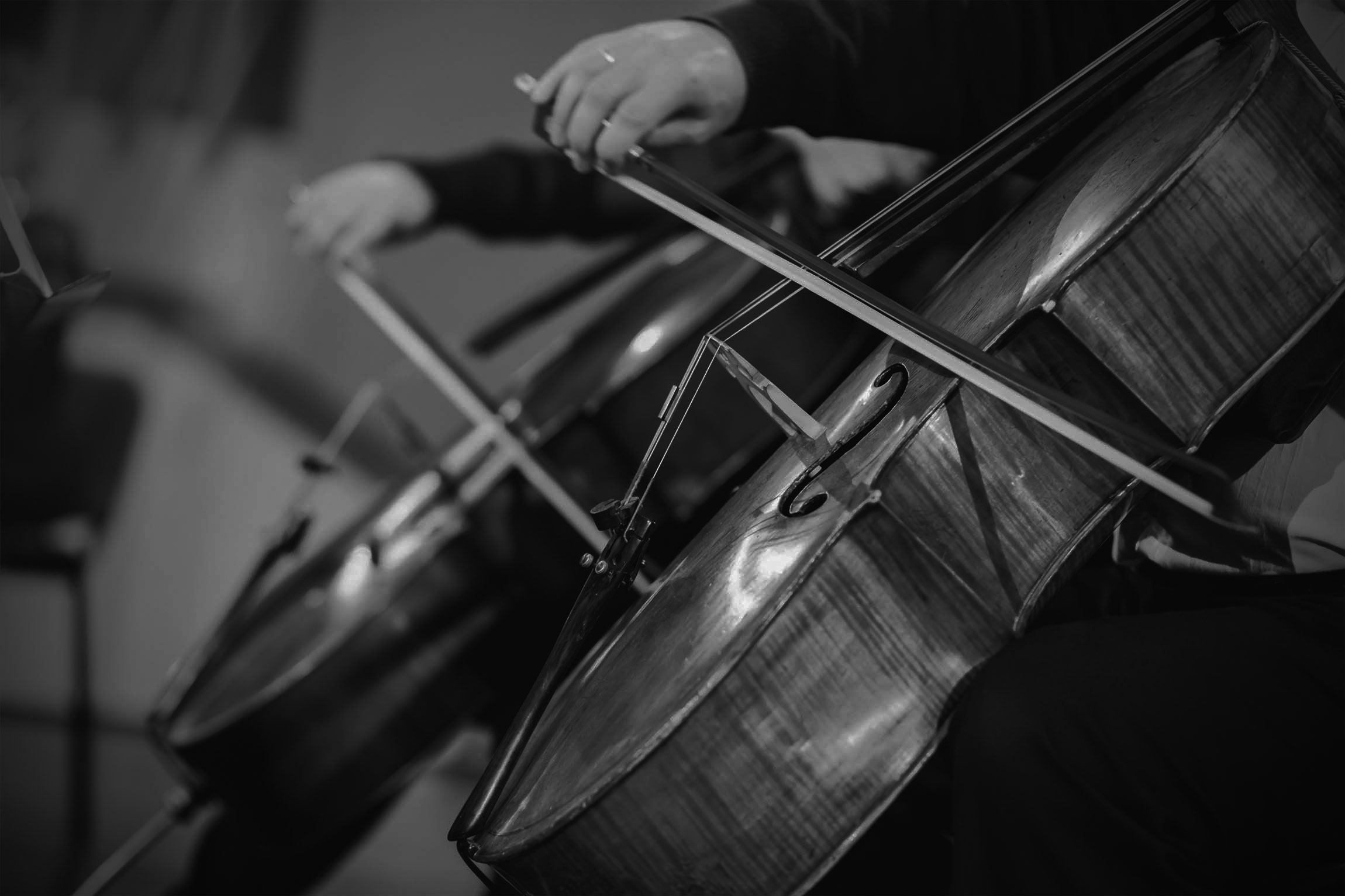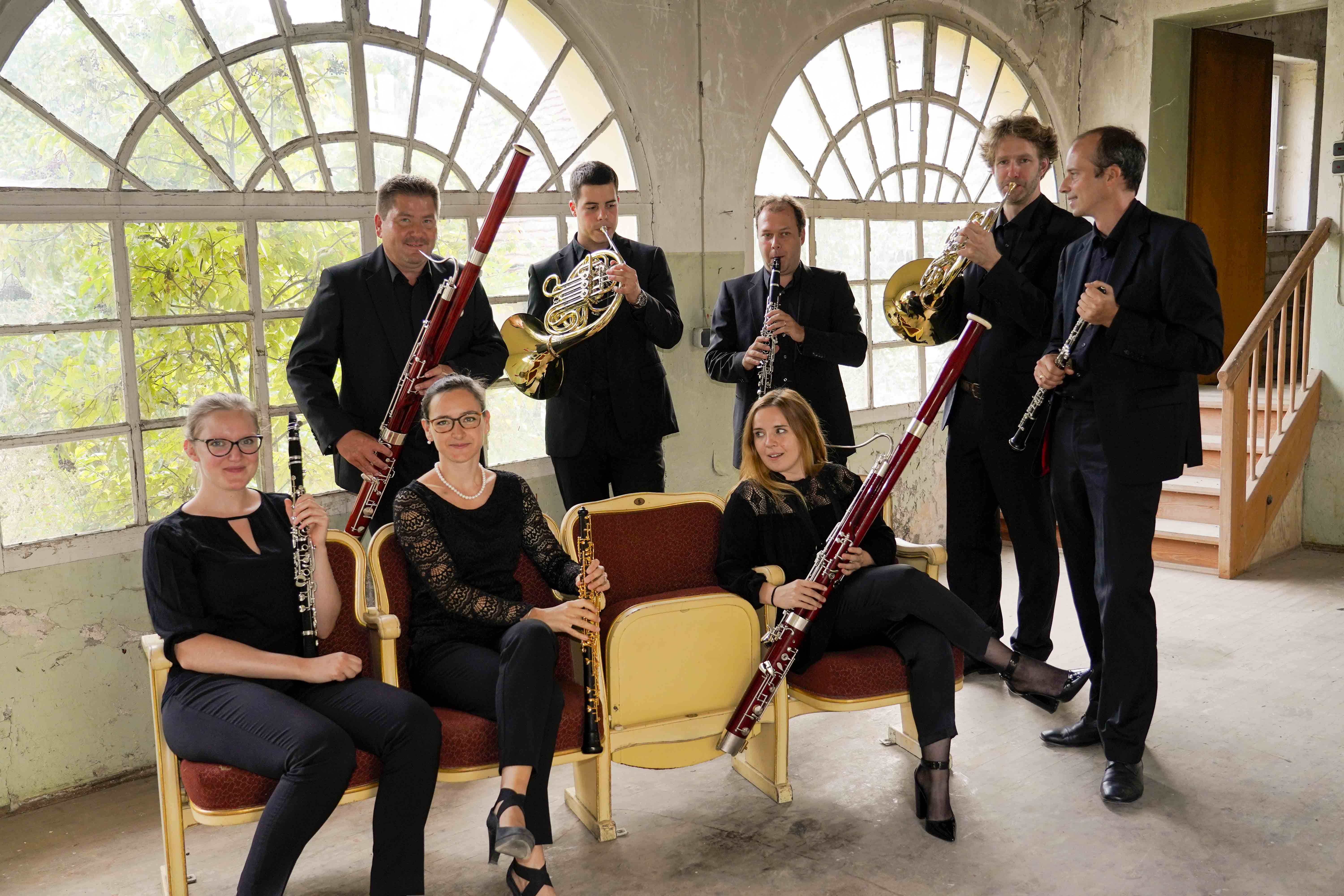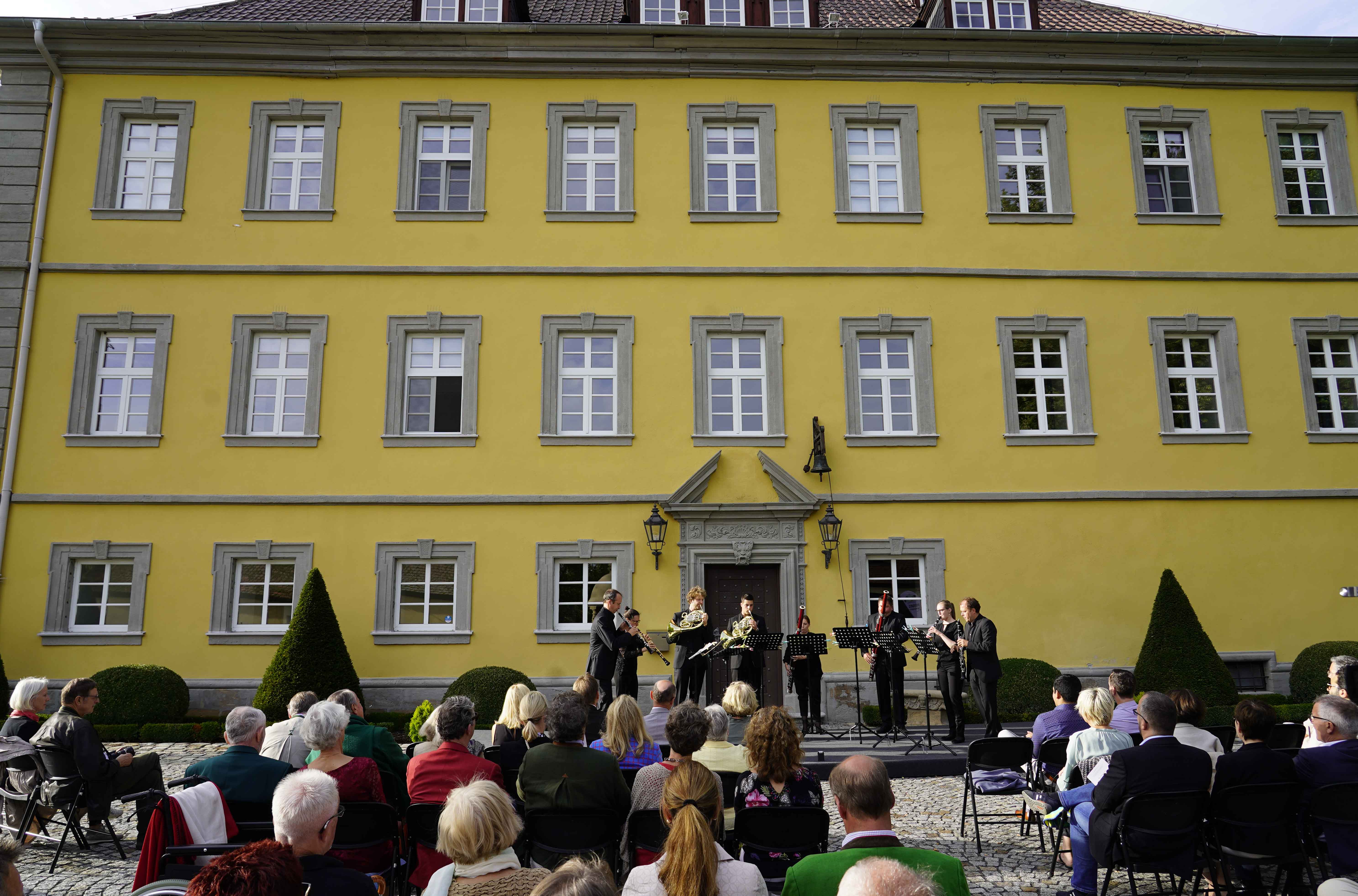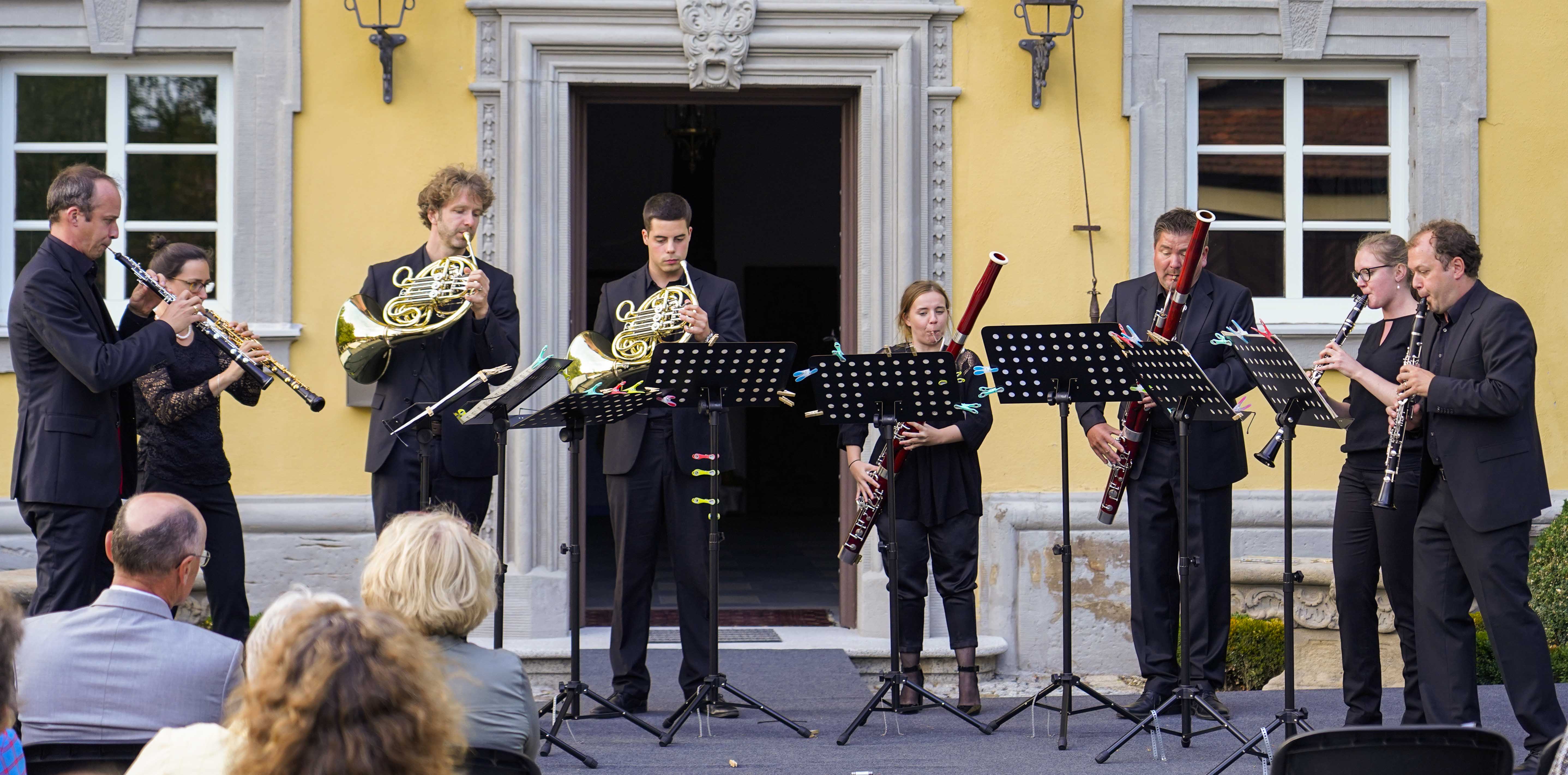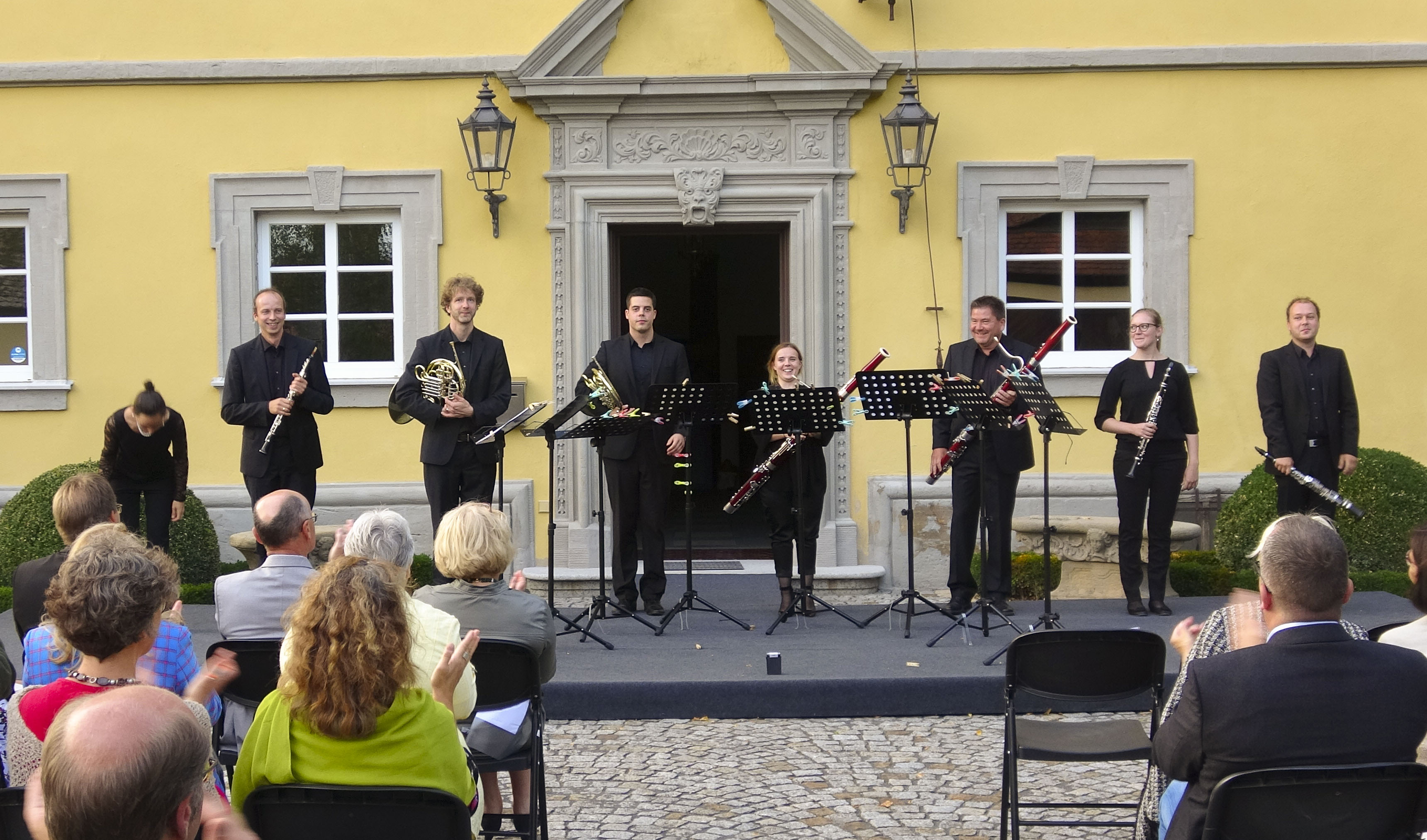Neue Presse Coburg, 3.9. 2019
The wind octet of the Staatskapelle Berlin gave a guest performance on 1 September 2019 at the opening of the concert series and as the musical laying of the foundation stone for the Orangery of Hafenpreppach Castle.
This was written by the press for the first concert:
Neue Presse Coburg, 3.9. 2019
Henrik Stein, owner of Hafenpreppach Castle for three years, set an exclamation mark in his courtyard right at the first “event” of the HIMS Academy, which was only founded in July 2019: After all, he invited musicians from the Staatskapelle Berlin to open his new concert series. And what could be more suitable for an open-air event than a wind ensemble?
The wind octet of the renowned Berlin ensemble – which this year can look back on a similarly long tradition as Castle Hafenpreppach – thus performed and introduced itself in the castle courtyard. The eight soloists: Fabian Schäfer and Charlotte Schleiss, oboe, Tibor Remann and Amelie Bertlwieser, clarinet, Holger Straube and Jamie Louise White on bassoon, who took over at short notice, as well as Lászlo Gál and Sebastian Posch, horn, took the opportunity at the beginning to present their instruments in groups of two. They took the audience by the hand to lead them into the garden (clarinets), to a staircase (oboes), to the entrance of the still to be renovated orangery (bassoons) and back to the house (horns), where small duos of De Vienne, Wilhelm Friedemann Bach and contemporaries sounded, before everyone gathered on the stage in front of the main entrance to the ensemble.
An Andante-Rondino from a youth work by Ludwig van Beethoven put the audience in the right mood after the short tour. The main works were two Mozart serenades, initially No. 11 KV 375, composed as “Gassenmusik”, with the clear ulterior motive of having potent people in the alleys.
To draw attention to the 25-year-old Mozart who has just arrived in Vienna. But this octet has nothing in common with the “street music” that one encounters everywhere in pedestrian zones today, since it can be classified at the highest artistic level. In the Berliners’ interpretation, the piece swings from the first note, lets two different minuets with trios be heard, and an enchanting Andante, to which even trees rushing in the wind, church bells or temporary dog barking from the village can do nothing. The concluding “Gassenhauser”-Allegro, laughing heartily, sent the listeners into the break with a smile.
The large bell at the entrance door invited the listeners, after some refreshments, to the second part, also dedicated to Mozart. In the late afternoon, “Nacht-Musique” No. 12, a mature work from the year 1782, was heard, which captivated the listener with its clearly worked out dissonances in the initial Allegro. Mozart used Dassubtil’s languishing Andante as a kind of “self-citation” later in his opera “Così fan tutte”. In the minuet, oboes and bassoons are soloistically accentuated before the piece ends in a variation movement in which once again all have their effective solos.
Numerous enthusiastic audiences in the courtyard of the palace thanked the players with persevering applause, mixed with bravos, and in return received a ravishingly tingling version of Don Giovanni’s “Champagnerarie”.
This first concert may have laid the foundation for the future: Under the motto “Encounter – Discover – Experience”, the Academy is planning a variety of artistic events, and next year the Orangery is to be expanded into a concert hall.

